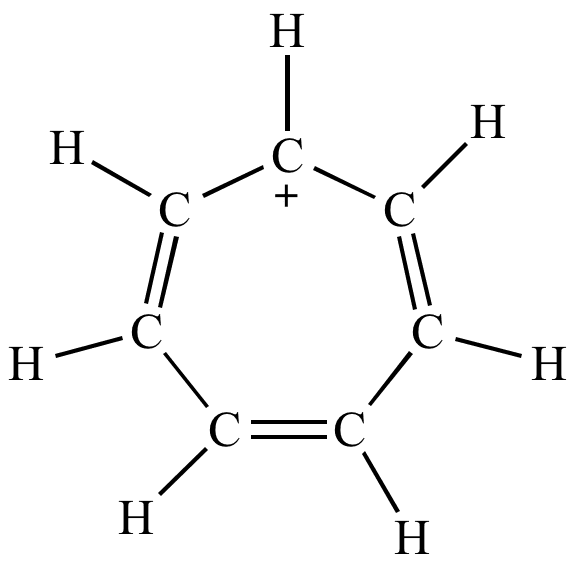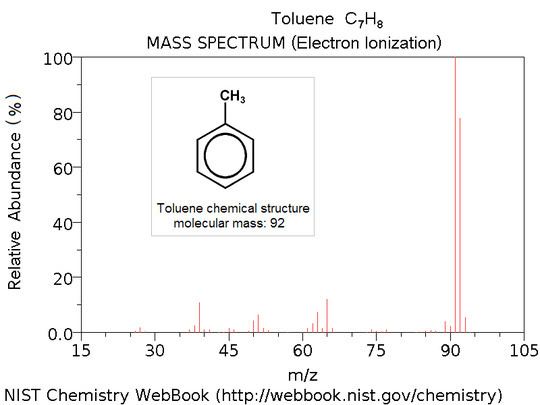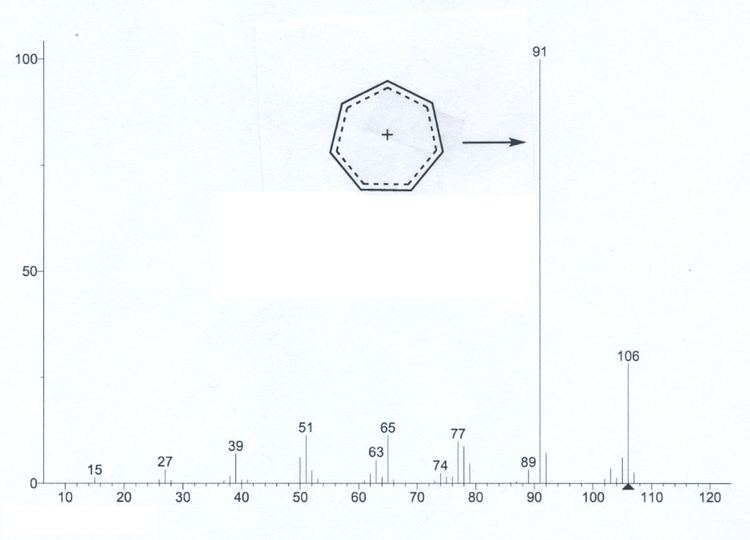 | ||
Tropylium cation top 6 facts
In organic chemistry, the tropylium ion is an aromatic species with a formula of [C7H7]+. Its name derives from the molecule tropine (itself named for the molecule atropine). Salts of the tropylium cation can be stable, e.g., tropylium tetrafluoroborate. It can be made from cycloheptatriene (tropylidene) and bromine or phosphorus pentachloride.
Contents

It is a regular heptagonal, planar, cyclic ion; as well, it has 6 π-electrons (4n + 2, where n = 1), which fulfills Hückel's rule of aromaticity. It can coordinate as a ligand to metal atoms.

The structure shown is a composite of seven resonance contributors in which each carbon atom carries part of the positive charge.

In 1891 G. Merling obtained a water-soluble salt from a reaction of cycloheptatriene and bromine. The structure was elucidated by Eggers Doering and Knox in 1954.
Mass spectrometry
The tropylium ion is frequently encountered in mass spectrometry in the form of a signal at m/z = 91 and is used in mass spectrum analysis. This fragment is often found for aromatic compounds containing a benzyl unit. Upon ionization, the benzyl fragment forms a cation (PhCH+
2), which rearranges to the highly stable tropylium cation (C
7H+
7).
Reactions
The tropylium cation reacts with nucleophiles to form substituted cycloheptatrienes, for example:
C7H+
7 + CN−
→ C
7H
7CN
Reduction by lithium aluminum hydride yields cycloheptatriene.
Reaction with a cyclopentadienide salt of sodium or lithium yields 7-cyclopentadienylcyclohepta-1,3,5-triene:
C7H+
7X−
+ C
5H−
5Na+
→ C
7H
7C
5H
5 + NaX
When treated with oxidising agents such as chromic acid, the tropylium cation undergoes rearrangement into benzaldehyde:
C7H+
7 + HCrO−
4 → C
6H
5CHO + CrO
2 + H
2O
Many metal complexes of tropylium ion are known. One example is [Mo(η7-C7H7)(CO)3]+, which is prepared by hydride abstraction from cycloheptatrienemolybdenum tricarbonyl.
